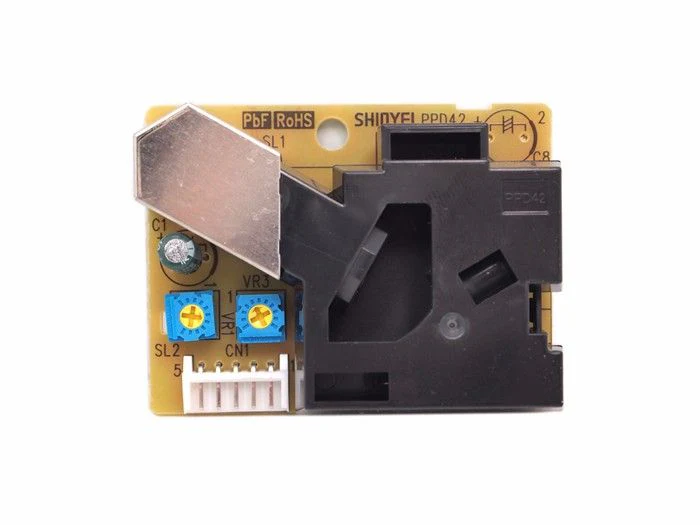
Overview
Provide reliable data for air purifier system Easy maintenance PWM output Grove compatible interface Compact and light design.
This Dust Sensor gives a good indication of the air quality in an environment by measuring the dust concentration. The Particulate Matter level (PM level) in the air is measured by counting the Low Pulse Occupancy time (LPO time) in a given time unit. LPO time is proportional to PM concentration. This sensor can provide reliable data for air purifier systems; it is responsive to PM of diameter 1μm.
Note:
This sensor uses a counting method to measure dust concentration, not weighing method, and the unit is pcs/L or pcs/0.01cf.
Please pay attention to the warnings listed here.
Features:
- Grove compatible interface(extra wire with connector)
- Supply voltage range: 5V
- Minimum detect particle: 1um
- PWM output
- Dimensions: 59(W)x45(H)x22(D) [mm]
Application Ideas:
- Air Purifier
- Air Quality Monitor
- Air Conditioner
- Ventilator
Get Inspired

Lets make a programmable guitar pedal, using all the power from the Arduino DUE board with 12 bits ADCs, DACs and RAM memory.

As a continuation from his previous Arduino BASIC interpreter project, Stefan Lenz wanted to take things a step further by recreating a home computer from the 1980s with an Arduino Due board and just a few other components. His system combines a 7" 800 x 480 TFT screen, an SD card reader acting as the disk, and a PS/2 port for connecting a keyboard. He began by mounting the TFT display shield to the Arduino by slotting it in place and inserting an SD card to function as the external disk since floppy drives have long since disappeared and would be far too unwieldy. After soldering some additional wires to the SPI and I2C bus pins, a level shifter was attached to two digital pins that serve as the data and clock lines for the external PS/2 socket. Most of the “magic” in this project comes from the programming which handles everything from reading inputs to showing graphics on the LCD and even interfacing with other peripherals over either I2C or SPI. All of the code needed for this retro home computer can be found here in Lenz’s tinybasic repository, which contains a plethora of example projects and demonstrations that can be run/modified.









